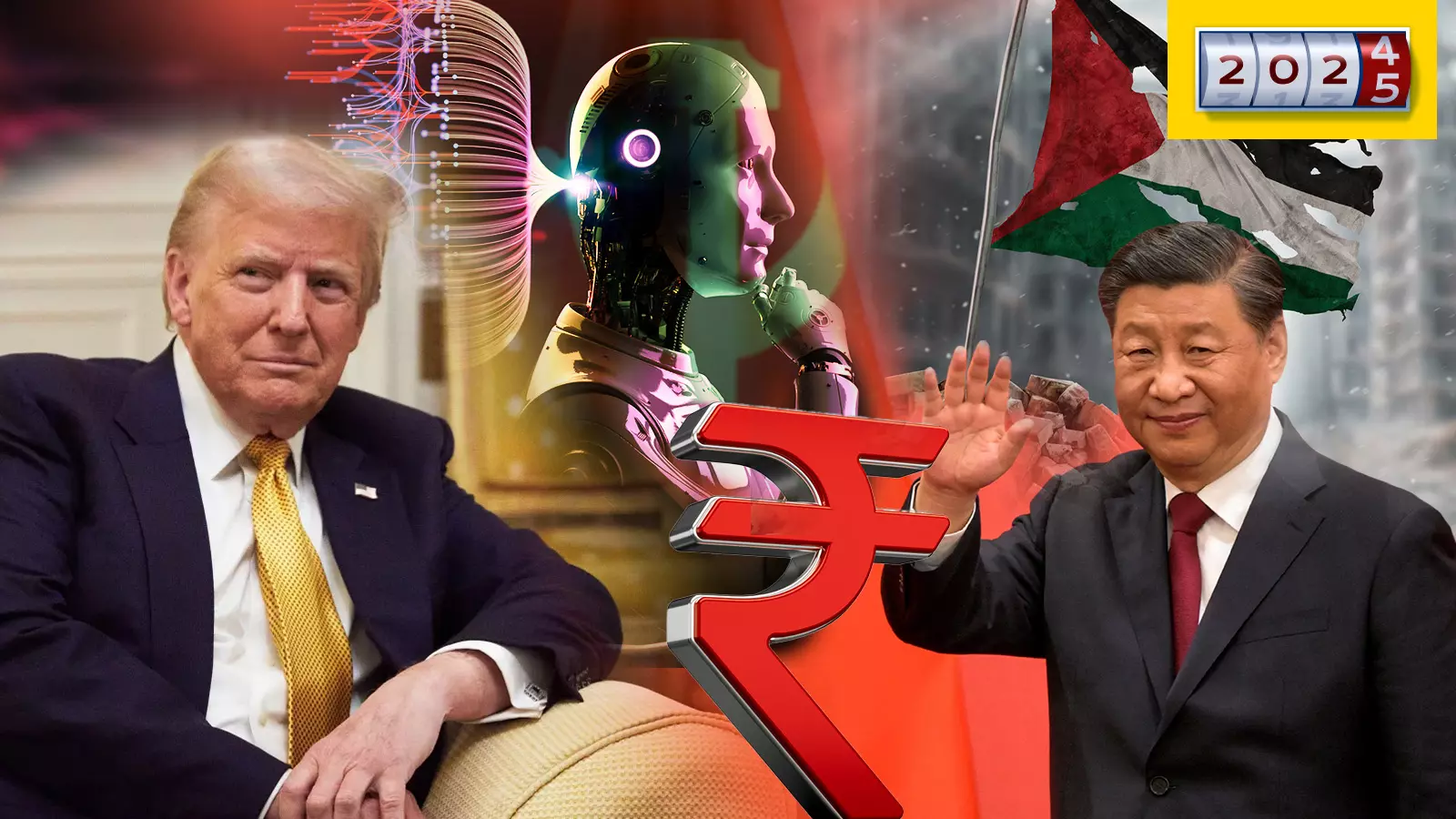
- Home
- India
- World
- Premium
- THE FEDERAL SPECIAL
- Analysis
- States
- Perspective
- Videos
- Sports
- Education
- Entertainment
- Elections
- Features
- Health
- Business
- Series
- In memoriam: Sheikh Mujibur Rahman
- Bishnoi's Men
- NEET TANGLE
- Economy Series
- Earth Day
- Kashmir’s Frozen Turbulence
- India@75
- The legend of Ramjanmabhoomi
- Liberalisation@30
- How to tame a dragon
- Celebrating biodiversity
- Farm Matters
- 50 days of solitude
- Bringing Migrants Home
- Budget 2020
- Jharkhand Votes
- The Federal Investigates
- The Federal Impact
- Vanishing Sand
- Gandhi @ 150
- Andhra Today
- Field report
- Operation Gulmarg
- Pandemic @1 Mn in India
- The Federal Year-End
- The Zero Year
- Science
- Brand studio
- Newsletter
- Elections 2024
- Events
- Home
- IndiaIndia
- World
- Analysis
- StatesStates
- PerspectivePerspective
- VideosVideos
- Sports
- Education
- Entertainment
- ElectionsElections
- Features
- Health
- BusinessBusiness
- Premium
- Loading...
Premium - Events

Even before Trump gets his chance to reshape American policy and global relations, Biden has already heralded massive disruption; here's to a year of big changes
The year 2025 will be marked by disruption — in global economic interactions and geopolitics, and in the way factories produce and how companies are run. Growth is likely to slow down in most parts of the world.
China’s new industries centred on the energy transition away from fossil fuels will make deep inroads, both in the generation of energy and in the replacement of internal combustion engines with electric powertrains in the world of automobiles.
India will see elections in Delhi and Bihar, and local body elections in different states. Germany will hold decisive elections, so, probably, would France, although French presidential elections are due only in 2027.
Most commentary tends to see the coming disruption in the form of an orange blob in the White House. But even before Donald Trump gets his chance to reshape American policy, and, therefore, global relations, according to his fancy and the prejudices of his ‘basket of deplorables’, to borrow a colourful phrase from Hillary Clinton to describe Trump supporters, Joe Biden has already heralded massive disruption.
Also read: 2024, a year when the world went adrift amid war, mass killings
New superpower of Middle East
For one, by backing Israel’s war on Gaza and Lebanon, the Biden administration has installed Israel as the new superpower of the Middle East. That the new superpower beats its chest and roars out its belligerence, like a killer ape in an old Tarzan movie, standing on the dead bodies of 45,000 odd Palestinian men, women and children does not alter the reality of the power shift in the region.
Iran has been weakened to such an extent that its principal focus is to ward off a fresh wave of attacks on its strategic assets, rather than protect clients such as Syria’s Assad or the Houthis of Yemen, not to speak of the Hamas or the Hezbollah.
Through its proxy, Israel, the US has acquired unprecedented dominance of the Middle East
True, the Hamas and the Hezbollah have not yet totally qualified as relics of the past. They could yet regroup and rearm. So could the Islamic State, as a source of remote radicalisation of disgruntled Muslim youth around the world. The rise to power of a jihadist force in Syria could give added impetus to the revival of the Islamic State.
The Gaza war will not get over with a truce between the active combatants. It has spawned intense strains of both antisemitism and Islamophobia. These viruses will spread far and wide, each feeding and strengthening the other, and infecting individuals around the world to lethal effect. The victory cry of Tarzan’s apes merely spread noise. Israeli triumphalism will claim innocent lives around the world.
Revamped US tech industry
Another kind of Biden-inspired disruption is poised to make its way through the world: new American competitiveness in technology-intensive manufacturing and climate mitigation.
By providing subsidies to the tune of $1 trillion, through three laws — the Infrastructure Act, the Inflation Reduction Act and the Chips Act — Biden has injected new blood into America’s high-tech industry.
These dynamics will work their way through the global economy in the years to come – it is safe to assume that Trump would not scupper the projects in receipt of these subsidies, even if he is ideologically opposed to climate change mitigation, because most of such projects are located in states ruled by Republicans.
US companies will acquire competitiveness in green hydrogen, carbon dioxide removal and battery technology, apart from matching TSMC in chip making capability.
Trump's foreign policy
Trump’s foreign policy would force some reconfiguration of global power. His offer to buy Greenland, annex Canada as the 51st state and take the Panama Canal back from Panama indicate a firm belief in the principle that might is right.
In the face of robust Trumpian scepticism about the utility of American alliances abroad, demands that allies should pay for American protection, and support from the MAGA base for American isolationism, Europe, Japan and South Korea would be forced to rethink their dependence on the US for strategic resilience.
Also read: Why September 2025 could be make or break for Narendra Modi
China’s strategic rivalry with US
French President Emmanuel Macron’s call for European strategic capability outside NATO would find more takers among EU members. Turkey will find new legitimacy for its ambition to emerge a centre of Turkic/Islamic power, quite apart from nostalgia for Ottoman glory.
Japan and South Korea would both improve relations with China and strive for greater self-reliance. Both nations are capable of acquiring greater military power than what they possess at present, and will find it expedient to convert that capability into achieved reality.
China is already set on a course of strategic rivalry with the US and will, confronted with an abrasive Trump administration, redouble its efforts to secure military, technological and diplomatic parity. Africa and Latin America will see Chinese charm offensives, including Belt and Road Initiative projects on more liberal terms than hitherto.
Trump set to spark fiscal chaos
Trump will sow economic chaos for Americans and for the world. His threatened tariffs would be met with reciprocal tariffs, apart from feeding cost-push inflation in the US.
A trade war would reduce incomes and hamper trade around the world. His promised deportation of undocumented immigrants would create labour shortages, particularly in construction, the one industry that can alleviate a housing shortage, a prime driver of home prices and rentals.
Trump’s promised tax cuts would widen the fiscal deficit, and add excess demand to other inflationary pressures. The US Fed would be compelled to raise policy rates, to curb inflation.
The cycle of redeployment of capital to the US to reap higher yields, the expectation of subsequent rate cuts and capital flows in other directions, and higher volatility of stock prices around the world would be repeated.
As rates go up in the US, the dollar index would rise, depreciating currencies such as the rupee, making imports more expensive, particularly energy. Considering that most parts of the world, other than the US, are in for relatively tame growth in the immediate future, the price of oil is likely to stay subdued in dollar terms. Depreciation of the rupee would push up costs for Indians.
Also read: India’s overture to Chinese dragon leaves American eagle high and dry
US to back India with sale of arms
The Indian economy will not have exports as a major driver of growth, thanks to the ill-effects of a Trump-sponsored war on global growth.
However, if the government steps up its own infrastructure funding and provides the private sector avenues for broad-based, risk-mitigated investment in infrastructure, there is no reason why India should not regain its growth momentum, provided the ruling party’s allies in the Sangh Parivar drop their efforts to spread religious animosity and social conflict.
Given the reality that India is the natural countervailing power in this part of the world vis-à-vis China, the Trump administration would follow its predecessor’s strategy of cultivating India as an ally and strengthening it with the sale of arms and transfer of defence technology.
Enhanced role of AI in future
The coming year would see greater deployment of artificial intelligence (AI) in real-world applications. Rather than kill jobs, AI has so far boosted employee productivity. The ongoing tendency for deploying robots on the shop floor would get a boost in economies that face a shortage of skilled workers.
Even as companies that develop sensible AI applications get a boost, the raft of startups that received massive amounts of funding but failed to create useful AI solutions would go belly up.
The arrival of AI as deployable applications, rather than as science fiction or abstract promise/challenge, would accentuate the imperative for India to revamp its educational and human resource development systems, in order to produce school-leaving youth who wield AI rather than get displaced by it.
The coming year promises to be a year of disruption and change on many fronts.
(The Federal seeks to present views and opinions from all sides of the spectrum. The information, ideas or opinions in the articles are of the author and do not necessarily reflect the views of The Federal.)


